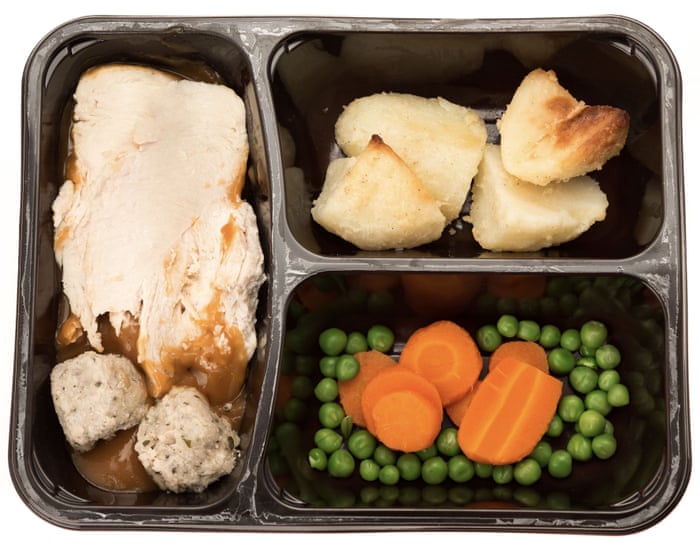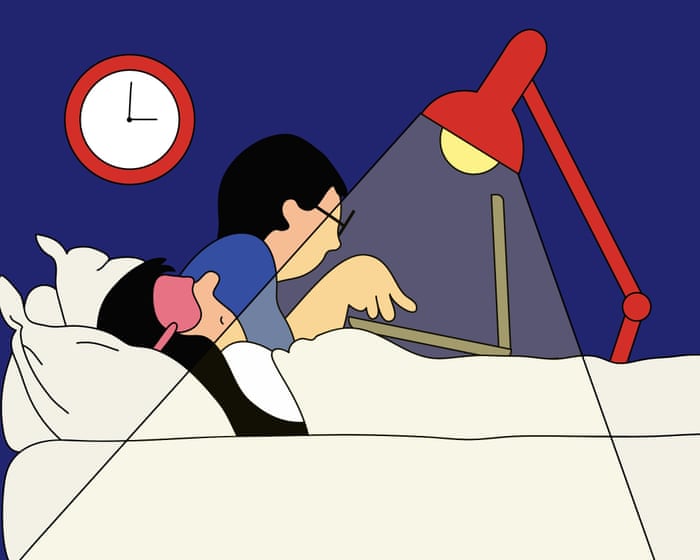It was meant to be a special family Sunday lunch at a countryside pub. The place looked promising – a recently refurbished traditional pub with a riverside terrace, bustling with customers. The menu sounded impressive too – a large parchment-style sheet boasting about their aged beef and locally sourced ingredients.
But the food was terrible. Starters were an assortment of unidentifiable fried lumps. The meat arrived cold and gray, the gravy watery, the roast potatoes soggy, and the Yorkshire pudding had the texture of a dishcloth. It was hard to believe any of it had been freshly made that day – it tasted more like reheated leftovers, and at £30 per person.
You’ve probably had a similar experience – or at least the budget version: pub menus offering endless variations of pies and burgers, all clearly microwaved from frozen, served scalding hot alongside greasy chips.
How did pub food get so bad? We like to think Britain’s culinary dark ages are behind us, that the rise of gastropubs in the 90s and 2000s transformed the scene, filling the countryside with talented chefs cooking fresh, local produce. While that’s true in some places, overall, pub food in the UK seems to be getting worse.
“You’re definitely not alone,” says Katie Mather, a drinks writer and pub blogger. “There’s evidence to support your theory.”
Ray Bailey, co-author of 20th Century Pub, agrees: “Pub food has been quietly declining for years, both in quality and availability. There was a golden era when you could reliably get a decent, reasonably priced meal. Now, many pubs have closed their kitchens or outsourced food to fast-food pop-ups.”
Pubs have never faced tougher times. Costs keep rising – rent, staffing (partly due to higher National Insurance), energy (for heating and refrigeration), alcohol (duty on a bottle of wine has gone up by nearly £1 in two years), and food (one chef told me beef prices have risen 50% in eight months). Add in post-Covid recovery and the cost-of-living crisis, and it’s no surprise pubs are struggling. According to the British Beer and Pub Association, 15,000 pubs have closed in the last 25 years. While around 45,000 remain, the UK is losing about six pubs a week.
“Pub food used to be profitable, but with prices soaring, that’s no longer the case,” says Mather. “Owners have been cutting corners in subtle ways for years, but now it’s becoming impossible to hide.”
Brian Hannon, co-founder of London restaurant group Super 8 (which includes Brat and Kiln), spent 18 years in the pub industry. He traces the decline back to the 1989 Beer Orders, when the government limited breweries to owning 2,000 pubs each to boost competition. At the time, six breweries controlled 75% of UK pubs, with 95% of their revenue coming from drinks. The change allowed new pub chains and independents to thrive. By the time the rules were scrapped in 2003, the industry had already transformed – but not necessarily for the better.Pub habits were changing too. By the 2000s, we had what Hannon calls the “three Fs”: food, females, and fenestration (windows). Pubs became more open, both physically and socially, while food sales helped offset declining drink revenues. This was the era of new chains like All Bar One and pioneering gastropubs such as The Eagle in Clerkenwell, London. Pub food became a path to culinary fame – in 2001, The Stagg Inn in Herefordshire became the first pub to earn a Michelin star, while Tom Kerridge’s The Hand & Flowers in Marlow now holds two.
However, this golden age didn’t last. “I won’t use the term ‘gastropub’ anymore – it’s lost its meaning,” says Oisín Rogers, co-founder of London’s popular Devonshire pub. “Original gastropubs were chef-run or family businesses where owners cooked everything from scratch with pride. Then chains copied the look – similar decor, similar menus – but served much lower quality food.” The Good Food Guide dropped the term “gastropub” in 2011, though you’ll still find it on supermarket ready meals like Marks & Spencer’s “Gastropub” range by Tom Kerridge.
Today’s pub food scene falls into three categories, according to Hannon. At one end are quality-focused pubs serving premium food to customers willing to pay. At the other are large chains prioritizing low costs and high profits. “The cheaper the food, the more likely it’s pre-made rather than chef-prepared,” Hannon notes, though he acknowledges chains can produce “not-bad food efficiently.”
In the risky middle are smaller chains and independents trying to offer gastropub-style menus with minimal investment and maximum profit – often leading to compromises. (The disappointing Sunday roast I encountered came from a pub group using nearly identical menus across locations, suggesting centralized production.)
“Pub managers often get spreadsheets telling them where to buy ingredients and how to prepare dishes,” Rogers explains. “If they don’t follow instructions perfectly, you get inferior meals.” Hannon adds: “Mid-range pubs struggle with food – chef costs are high, staffing is hard (especially in rural areas), and economics are tough. Many are simplifying their food offerings.”
While menus won’t admit it, many pubs now outsource cooking. “Some even serve supermarket microwave meals – cheap, long-lasting, and highly profitable,” says Bailey. Even famous names aren’t immune – in 2009, Gordon Ramsay was caught serving premade food.Here’s a rewritten version of the text in fluent, natural English while preserving the original meaning:
—
Food prepared in a central kitchen is served at three of his London gastropubs and presented as “freshly made,” with significantly higher prices. One sign of this trend is the rise of external catering companies. Brakes, the market leader, offers over 9,000 products on its website—from fresh ingredients to frozen pub food, like battered cod fillets at £1.69 each or Yorkshire puddings for 35p each. Paul Hulyer, Brakes’ head of hospitality customer marketing, mentions they stock 66 types of chips. While he doesn’t share exact figures, he says, “We’ve maintained strong, healthy volumes in the pub sector.”
Having worked in pub chains himself, Hulyer understands the growing pressures. “More pubs want to do some cooking now,” he says. “Back when I worked in kitchens, everything was made from scratch with a team of 12. Now, with rising costs, you have to achieve the same with just four or five people. How? By outsourcing some prep work—that’s where we help.”
For example, Brakes sells pre-cooked beef brisket. “We’ve done the seven-to-eight-hour cooking for you,” Hulyer explains. “The pub just needs to defrost, portion, and add their own seasoning.” For those who want even less work, Brakes also provides ready-made sauces.
While Brakes maintains high food standards and responsible sourcing, it has no control over how its products are used in kitchens—or how they’re described on menus. Terms like “homemade” and “freshly prepared” can be misleading, says Rogers. “Some big chains claim to serve ‘aged beef,’ but that just means it was stored in a vacuum bag, not dry-aged.” He also points to questionable supply chains, like so-called “long-range chicken”—bred in Vietnam, packed in Singapore, injected with fillers in the Netherlands, then shipped frozen to UK wholesalers.
Many have horror stories. Bailey recalls working as a waiter in a 1990s chain pub: “The ‘homemade’ steak and kidney pie was just brown goop from a sachet topped with pre-made pastry.”
At the higher end of pub dining, quality comes with challenges. While pub chains might operate on 70% profit margins, serving fresh, high-quality food is far less profitable—leading to higher prices for customers. Mains at The Devonshire’s upstairs restaurant range from £20 to £40 (not including sides), though cheaper bar snacks are available downstairs. A Sunday lunch at The Hand and Flowers costs £175.
With such a focus on food, Mather questions whether these places can still be called pubs. “I’d argue they’re now just restaurants,” she says. To her, a pub is “somewhere I’d feel comfortable drinking without eating.” She points to her local in Lancashire as an example: “They serve great food, but I can also sit there with a pint and a book without feeling like I’m taking up a dining table. Some pubs have completely lost that.” It’s almost as if “gastro” has taken over.Here’s a natural, fluent rewrite of your text:
Pubs and restaurants are increasingly going their separate ways. So how can you avoid disappointment with your pub meal? What are the warning signs?
“I always check the tills,” says Rogers, who works in the industry. “If they’re using a standard corporate system that’s used nationwide, that makes me suspicious.”
Hannon advises: “Examine the menu – its size, focus, and presentation. Avoid laminated menus or places trying to serve Chinese, Indian, and Sunday roasts all at once. Ask staff about where ingredients come from and how long the chef has worked there.”
Rogers adds: “A good pub menu is usually short. If you see 35 main courses and 20 starters, most of that is probably frozen.” Look for about six options per course.
Mather notes: “At chain pubs, if the menu just says ‘lasagne,’ you know it’s frozen and microwaved. The fish and chips will be frozen too. Unless they have good daily specials or excellent local reviews, I’d eat elsewhere.”
Other solutions might help. In 2014, France introduced a “fait maison” (homemade) label for restaurants preparing food on-site. Though it didn’t catch on initially, there are plans to revive and require it. Meanwhile, UK cities are seeing more “drinking pubs” focused on beer and wine rather than food – like microbreweries and taprooms.
Mather, who recently visited a Lake District pub, observes growing interest in locally owned establishments: “Their food was excellent, and staff clearly cared about what they served.” Pubs were once community hubs, and some still succeed as gathering spaces – hosting events, markets, and performances alongside food and drink. The best pubs evolve while respecting customers who won’t tolerate poor quality meals.
[Note: The original text contained a correction notice about Oisín Rogers’ role, which has been preserved in this rewrite.]




